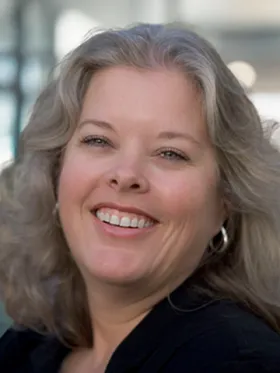Do we have the workforce we need for the future we foresee? For leaders of many federal agencies, the answer is deeply troubling.
As they seek to develop a workforce that can fulfill their evolving needs and missions, federal agencies inevitably encounter challenges impervious to tactical measures. Federal agencies must train current employees on new disciplines to ensure their workforce can meet their ever-expanding mission. Oftentimes, they need to bring in new talent from other agencies or private sector, which may come at higher costs and at the risk of reduced efficiencies, at least to start.
Retaining star performers, who often have the aptitude to take on critical stretch roles, is another challenge, as is remaining competitive to attract new skilled talent.
Finally, given the number of federal employees eligible for retirement, agencies must leverage succession planning and knowledge management so that mid-level staff can move into leadership roles, while newly-hired employees learn and become productive faster.
Many agency leaders are seeking a more strategic approach in the form of an overarching workforce transformation plan, underpinned by organizational change management (OCM), to guide them through the changes involved.
With a workforce plan, federal agencies can predict their future personnel needs more accurately and develop strategies to achieve their goals. Effective OCM enables agencies to avert the problems that major transformations often entail. Agencies can guide their workers through the changes and ensure they are equipped, receptive and engaged in the transformation to reduce risk to mission outcomes.
Overcoming resistance to change
Resistance to change—whether out of fear, uncertainty, distrust, experience or a simple preference—is one of the most powerful impediments to transforming the workplace. Understanding how employees will react, and carefully designing OCM activities to mitigate the emotions some might be feeling, can go a long way towards achieving desired organization outcomes.
An effective workforce transformation process helps overcome resistance by engaging workers so that they actively participate in and contribute to the change as it unfolds. It starts with transparency about the reasons for the change and how it will help fulfill the mission. Agencies must be generous with information and updates throughout the process. When resistance arises, leaders must proactively seek to know the sources and reasons for resistance and address them accordingly. It prepares managers to carry out their roles effectively with strong communication, relevant examples and ready support when workers challenge the change.
Coping with age ranges
About 15% of federal workers are retirement-eligible, and another 30% will age into eligibility over the next five years, according to a 2023 White House report. This puts decades of knowledge and expertise at risk. This reality is compounded with digital transformation permeating the federal landscape at a time when an aging workforce is dominated by people who did not grow up using the internet, smartphones and personal computers. The reality of older technologies compounds this further because the younger workforce cannot imagine a work environment without advanced technologies, which serves them well in their daily lives.
Younger employees often leave federal service after just a few years. Whether for better pay, a different culture, a new experience or a lifestyle reason, younger employees are comfortable moving from one job to another. This reality creates an expensive trend in recruitment and training, and may extend the period of reduced productivity or cause cyclical mission disruptions. It impacts projects and may burden other workers.
An effective workforce transformation process addresses these vulnerabilities. For older employees not planning to retire, it starts by examining whether their work takes optimal advantage of technology, is conducted collaboratively where feasible, optimized for productivity and required for the mission.
This examination helps reveal technical skills gaps in older employees and identify how those gaps can be closed. The process also helps ensure younger employees understand how work is accomplished and why, even though it may be automated.
Once this analysis is completed in a way that informs decisions, federal agency leaders can devise plans to upskill employees. Effective workforce transformation also puts in place succession planning, providing a path to close gaps when workers do leave the agency.
Closing the collaboration gap
Collaboration helps organizations avoid problems, or solve problems sooner and with greater ingenuity, fewer resources and minimal disruption to the mission. However, barriers to collaboration are common in the federal workplace.
In vast, diverse and distributed workforces, co-workers lack the in-person interactions that facilitate collaboration. Workers isolated during the pandemic lost their traditional collaboration channels and abandoned collaboration habits. Moreover, the social skills required for effective collaboration can take time to develop.
Workforce transformation fosters culture that promotes working together. Workers need to trust their co-workers—and to trust that working together will not cost them credit, prestige or opportunity. Collaboration also encourages transparency—a free sharing of information, news and practices across the organization that assures workers they belong and are “in the know.”
Effective transformation trains workers in the social and communication skills they need for effective collaboration, including recognizing and accommodating the different methods that work best for various types of personalities and teams. It establishes expectations, channels, spaces and opportunities that facilitate collaboration, and provide the tools and technology that do the same.
Conclusion
In the words of the late Neil Peart, drummer and lyricist for the band Rush, “changes aren’t permanent—but change is.”
Change is inevitable, and in complex organizations, not always easy to manage. Federal agencies must meet this head on, and not underestimate the repercussions of having the skilled workforce to meet mission needs. Workforce planning is a specialty that is best accomplished by experts, not something that happens on its own or that should be performed by novices.
To learn more about how CGI can help you retain a collaborative, productive workforce with high morale through strategic workforce transformation, visit our website.






